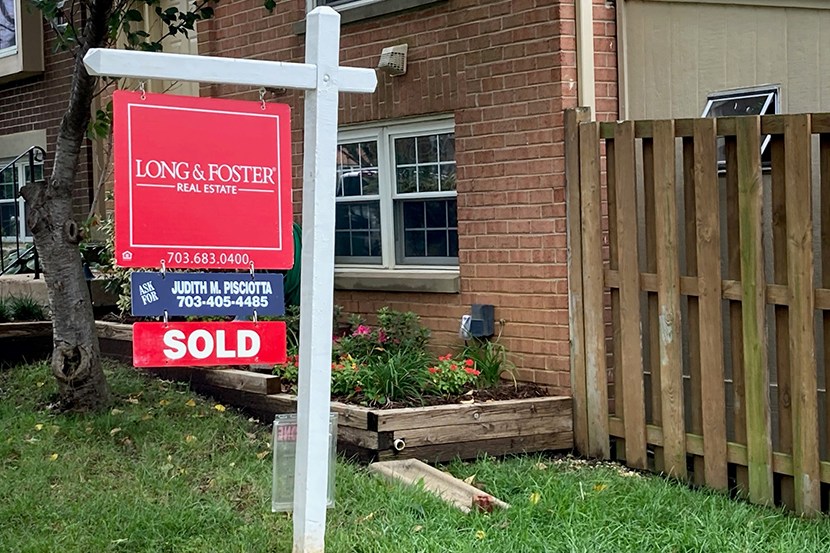
January Existing Home Sales Push to 2006 Levels

Existing home sales posted a modest 0.6 percent increase in January, the National Association of Realtors reported Friday, continuing just enough momentum to mark the highest annual pace since 2006.
NAR said total existing home sales increased by 0.6% from December to a seasonally adjusted annual rate of 6.69 million in January. Sales in total climbed year-over-year, up 23.7% from a year ago to the highest level since 2006, before the Great Recession.
Single-family home sales rose at a seasonally adjusted annual rate of 5.93 million in January, up 0.2% from 5.92 million in December and up 23% from one year ago. The median existing single-family home price rose to $308,300 in January, up 14.8% from a year ago.
Existing condominium and co-op sales came in at a seasonally adjusted annual rate of 760,000 units in January, up 4.1% from December and up 28.8% from one year ago. The median existing condo price rose $269,600 in January, an increase of 8.6% from a year ago.
Regionally, results were mixed, though median home prices rose at double-digit annual rates again. Sales in the South rose by 3.2% to an annual rate of 2,940,000 in Januaryand improved by 25.1% from a year ago. The median price in the South rose to $263,300, a 14.6% climb from a year ago. In the Midwest, sales rose by 1.9% to an annual rate of 1,570,000 in January and improved by 22.7% from a year ago. The median price in the Midwest rose to $227,800, a 14.7% increase from a year ago
In the West, sales fell by 4.4% from the month priorto an annual rate of 1,310,000 in January but improved by 21.3% from a year ago. The median price in the West rose to $461,800, up 16.1% from a year ago. In the Northeast, sales fell by 2.2% to an annual rate of 870,000 but improved by 24.3% increase from a year ago. The median price in the Northeast rose to $361,400, up 15.8% from a year ago.
“The housing market is starting the year on a strong note, driven by sustained housing demand, low mortgage rates, and the economy regaining its footing,” said Joel Kan, Associate Vice President of Economic and Industry Forecasting with the Mortgage Bankers Association. “Despite scarce inventory levels in the entry-level portion of the market, first-time buyers represented a third of sales last month. We expect a significant portion of purchase demand in the coming years to be driven by millennials and the younger-age cohorts.”
Mark Vitner, Senior Economist with Wells Fargo Securities, noted existing home sales track closed transactions and tend to lag changes in pending sales by one to two months. “As a result, any impact from the harsh winter weather in Texas and other parts of the country will not likely be reflected in the data for another couple of months,” he said.
Vitner said the modest January rise easily topped market expectations, which had called for a slight decline. “Existing home sales track closings, which tend to closely track pending home sales (purchased contracts) and mortgage applications by one to two months,” he said. “Both had trended lower late last year, suggesting that some payback was overdue. The deluge of home sales has overwhelmed closing attorneys, and the lags between signing a purchase contract and closing the transaction have lengthened. We expect sales to pull back somewhat in coming months. February’s harsh winter weather in key markets, such as Texas and other parts of the South, may impact both purchases and closings.”
However, any slowdown due to harsh winter weather is likely to prove temporary, Vitner said. “There are strong tailwinds behind the recent surge in home buying that are likely to carry over well into 2021 and 2022,” he said.
“Buyers quickly snatched up virtually every new listing coming on the market,” said Lawrence Yun, NAR chief economist. “Sales easily could have been even 20% higher if there had been more inventory and more choices.”
NAR reported the median existing-home price for all housing types in January rose to $303,900, up 14.1% from a year ago ($266,300), as prices increased in every region. January’s national price jump marks 107 straight months of year-over-year gains.
Total housing inventory at the end of January fell to just 1.04 million units, down 1.9% from December and down 25.7% from one year ago (1.40 million). Unsold inventory sits at a 1.9-month supply at the current sales pace, equal to December’s supply and down from the 3.1-month amount recorded in January 2020. NAR first began tracking the single-family home supply in 1982.
“Overall, low housing supply and rising prices continue to be a constraint on an even higher sales pace,” Kan said. “Tight inventory levels continue to create a competitive market for buyers and are pushing prices higher. [Thursday’s] U.S. Census Bureau report showed that new residential construction activity continues to rise, which hopefully bodes well for more choices for buyers and slower price growth in the spring.”
NAR said properties typically remained on the market for 21 days in January, unchanged from December and down from 43 days a year ago. Seventy-one percent of homes sold in January 2021 were on the market for less than a month.
First-time buyers represented 33% of sales in January, up from 31% in December and from 32% a year ago. Individual investors or second-home buyers purchased 15% of homes in January, up from 14% in December but down from 17% a year ago. All-cash sales accounted for 19% of transactions in January, unchanged from December but down from 21% a year ago. Distressed sales represented less than 1% of sales in January, unchanged from December but down from 2% a year ago.
